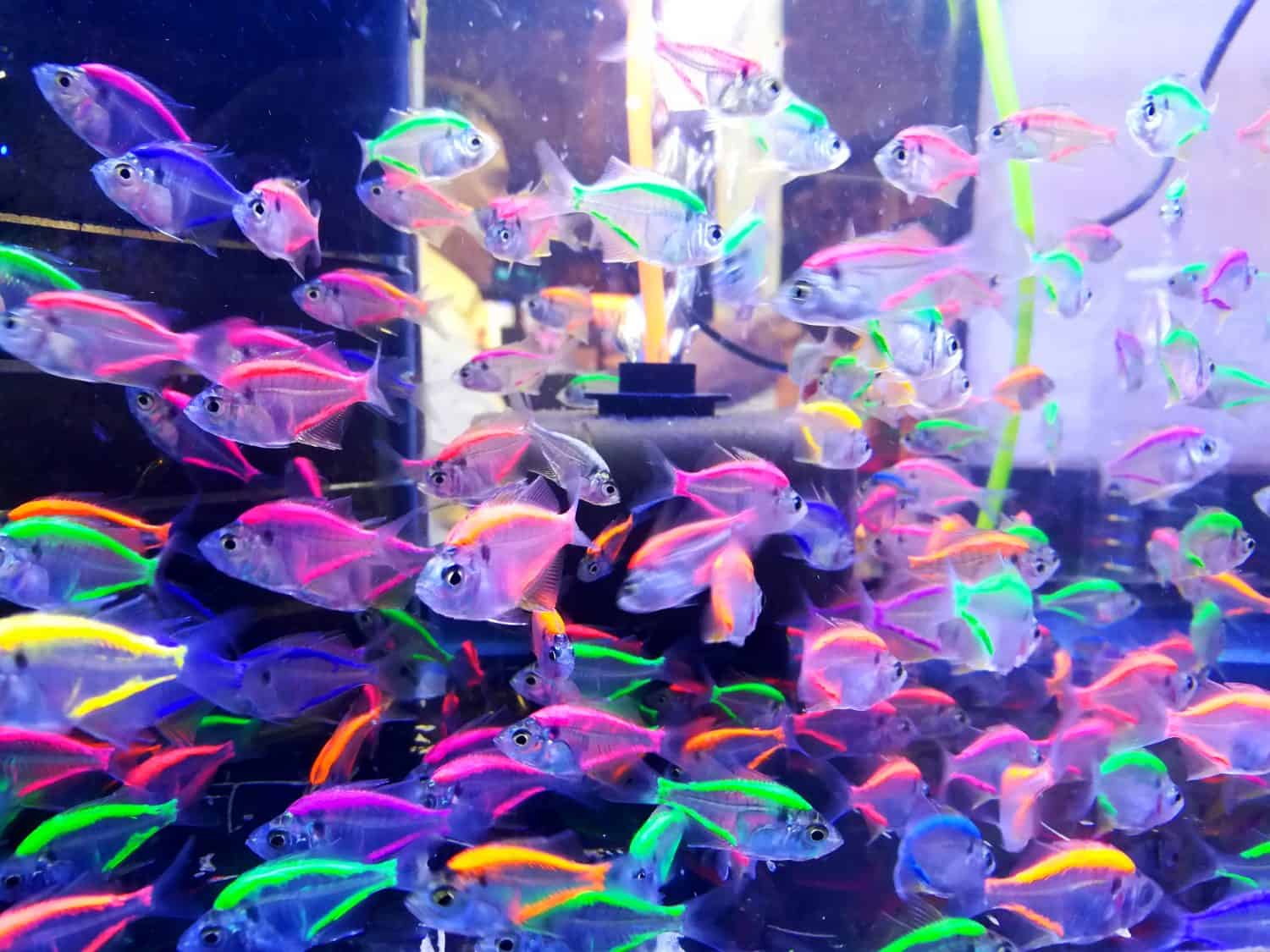
Have you ever wondered whether you’d be able to own a genetically-engineered pet, maybe one in wild colors that are not found in nature? The answer is yes and you can have one today for as little as $5. These are GlowFish: ornamental species that have been modified with jellyfish DNA to glow in wild florescent colors. How were these modern marvels created, and what may follow them in the pet trade in the future?
24/7 Wall St. Insights
- Many grain crops and some species of livestock have been genetically modified to improve their disease resistance and profitability.
- GloFish are the first pets available for sale that have been genetically modified for aesthetic reasons.
- Also: Discover “The Next Nvidia”
How Does Genetic Engineering Work?
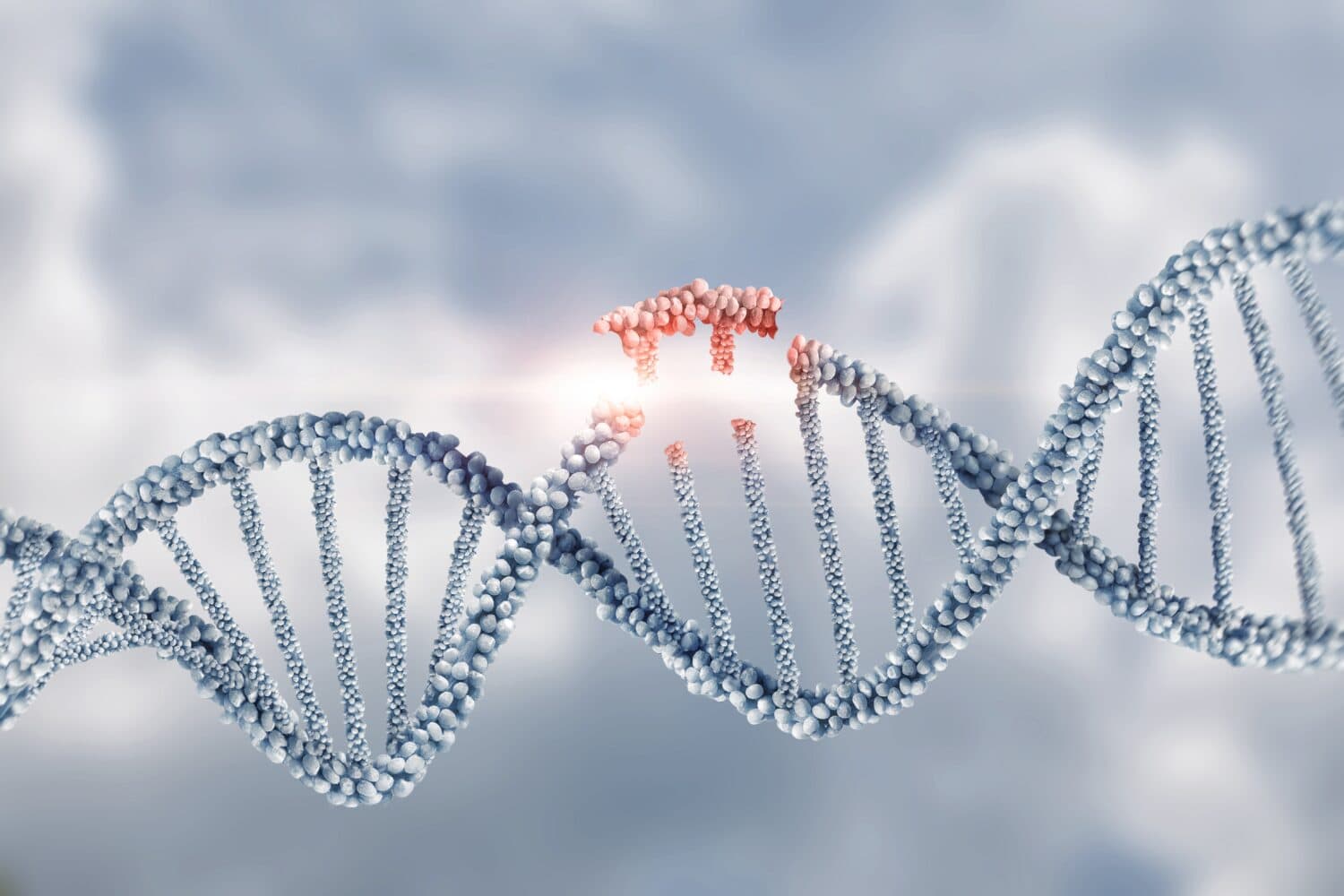
In the simplest terms for a complex process, genetic engineering involves using technology to change an organism’s DNA. This can mean just changing a single base pair of the DNA, deleting a region of it, or adding in a new DNA segment. Genes from one organism can be spliced into the DNA of another organism. In one experiment, salmon DNA was successfully spliced into the genetic code of a tomato species to make it more cold resistant.
What Plant and Animal Species are GMOs?

A great many plant species are now genetically modified organisms (GMOs), including soybeans, alfalfa, apples, corn, canola, cotton, sugar beats, zucchini, potatoes, yellow squash, papayas, and pink pineapples. Modifications to these crops increase productivity, hardiness, and resistance to diseases, pests and herbicides. Farmers can spray herbicides over some GMO crops and kill only the weeds, not the crop. Two GMO animals are currently in commercial production: the AquAdvantage Salmon that grows faster than normal, and the GalSafe pig that does not have alpha-gal sugar that some people are allergic to. Work is ongoing on a cow with a lighter coat that can thrive in warmer climates—an important advance as the climate warms.
Pros and Cons of GMOs

Genetically modified organisms can be more profitable for farmers and produce a better quality product for consumers. They can make farmland more productive so that it can support more people without deforesting areas for crops and livestock. Numerous studies have found them to be completely safe for human and animal consumption.
On the other hand, GMOs raise fears of contamination of the biosphere and the food supply in ways that might arise unpredictably in the future. For example, a GMO crop could be so widely raised that it decreases biodiversity and the survival of a species, if a disease or pest emerges that they are not resistant to. Some people oppose GMOs because they support large-scale agribusiness that is a major contributor to climate change. Some also object to research companies patenting living species like manufactured products.
How GloFish Were Developed
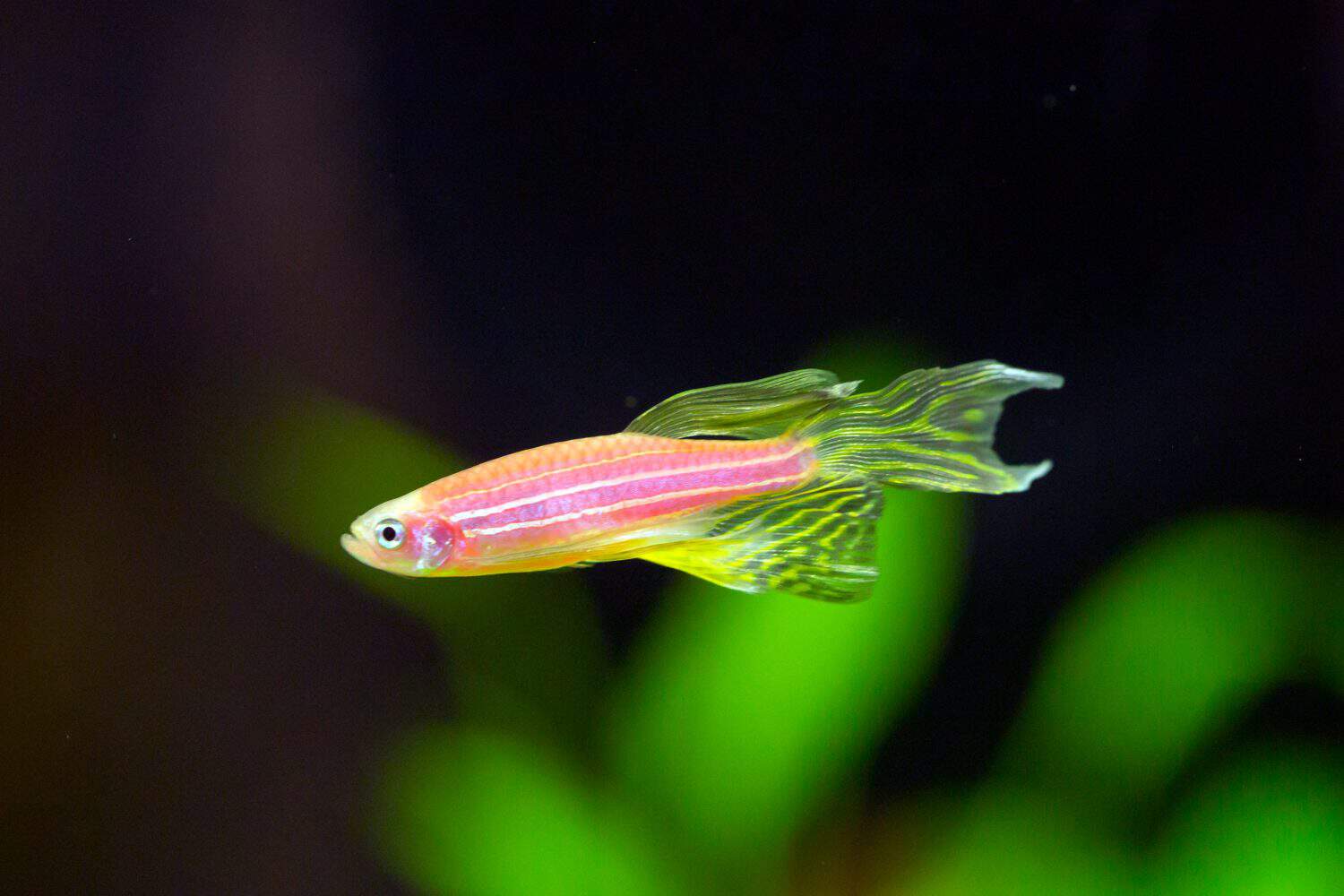
GloFish were first developed from zebrafish (Danio rerio), a small gold and blue striped fish native to India and Bangladesh. In 1999, researchers modified the fish with jellyfish DNA to give it a bright green flourescence. The intent was to make a fish that could detect pollution by glowing when it interacted with toxins in the water. Later, the process was repeated to create a red flourescent fish from sea coral DNA, and an orange-yellow one from another type of jellyfish gene. Since these early developments, more GloFish species have become available, including cory, pristella, tetras, long fin tetras, angelfish, barbs, and sharks. The currently-available colors are marketed as Starfire Red, Electric Green, Sunburst Orange, Cosmic Blue, Galactic Purple, and Moonrise Pink.
How Do You Care for GloFish?
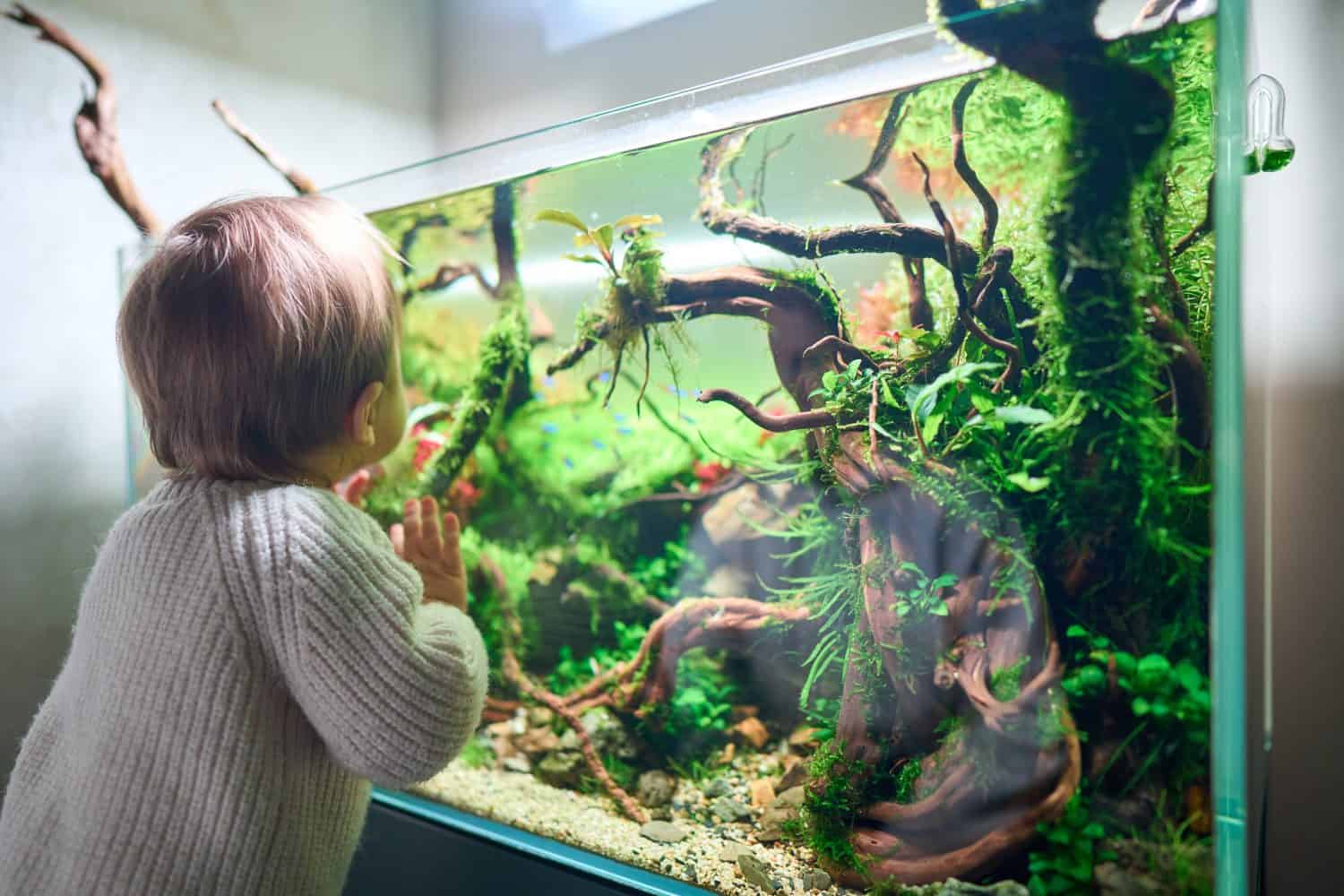
According to the GloFish website care requirements for these fish are no different than for their conventional species counterparts. They are all freshwater schooling fish that do best if kept in communities of five or more. An exception is the shark, which can be aggressive to others of its own species but content in a school of compatible freshwater species.
Where Can You Buy GloFish?

GloFish are marketed by GloFish LLC. They are not available in California due to a 2003 law that was intended to prevent the spread of biotech salmon. They are also illegal in Europe. In Canada and 49 U.S. states, they are available from major retailers like Petsmart, Petco, Amazon, and Chewy. You can find them as cheap as $5 or up to $35 or more. Breeding GloFish to sell is illegal as the company holds intellectual property rights to them.
Could GloFish Become Invasive?

Although there are many species of flourescent fish and other marine life in the wild, mostly they are found in the oceans, not in the warm freshwater environments that are the indigenous habitats of the various GloFish species. GMO GloFish have reduced fertility and produce fewer eggs when they do reproduce. Their color compromises their ability to camouflage themselves from predators. If the species were to escape into the wild, they would be expected to disappear relatively quickly due to natural selection.
Other Possible Near-Future GMO Pets
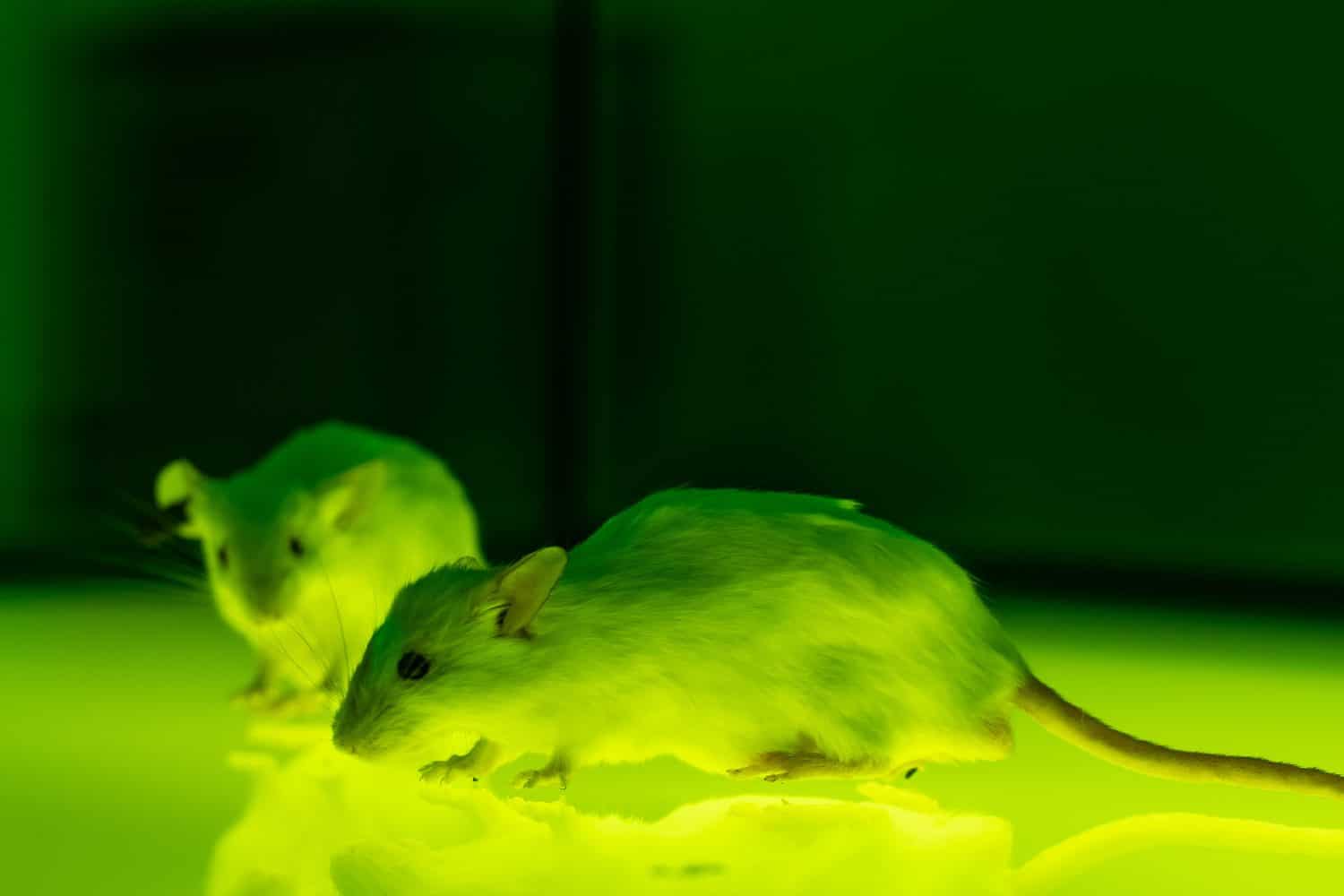
It’s possible you might be able to buy other kinds of flourescent pets in the future. Mice and rabbits that eerily glow green in the dark like fireflies have already been achieved for the purposes of medical research, such as identifying cancer cells more easily. A glowing dog or cat might be an interesting novelty (especially around Halloween!), but other kinds of genetic modifications could be more useful, such as developing pets that are non-allergenic, flea-resistant, or longer-lived. Many pet-lovers would be interested in technology to clone a beloved pet. Others would like to customize their animal’s eye color and the color and pattern of its coat. More sinister, a much more aggressive dog might be developed as a guard animal or for military purposes. And we’ve all seen that movie before . . . no thanks!
Distant Future GMO Pets

On the more distant horizon there may be a possibility of adjusting the DNA of wild animals to make them smaller and more docile, bringing back extinct species, or even creating true chimeras, resulting in creatures that dramatically combine features of two or more organisms. Combining human and animal or plant DNA is technically feasible, but will likely remain an ethical taboo for many years to come. The more extreme the modifications to living organisms, the greater the practical and ethical concerns. But for now, if it makes you happy to have a tank of pretty little glowing Frankenstein fish, you can have it.
Thank you for reading! Have some feedback for us?
Contact the 24/7 Wall St. editorial team.





